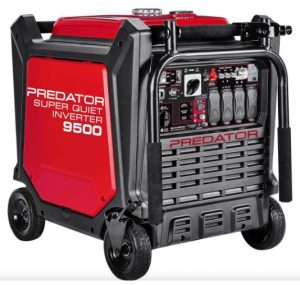Survival scenarios in most people’s lives typically do not exceed 72 hours. While longer-lasting incidents have occurred, the bare minimum to gear up for is a three-day survival ordeal where you may be deprived of power or certain amenities.
Getting ready for a 72-hour emergency is similar to having a financial safety cushion that covers three months’ worth of your expenses. It’s a brief time frame to help you cope with a difficult situation.
Ideally, you should plan to remain at home rather than resorting to relocation during an emergency. Even a three-day stint in the wild can be harsh for those not accustomed to or prepared for survival in such conditions.
The rationale behind having a minimum of a 72-hour preparation plan is due to the estimated time it would take for government bodies or emergency services to arrive and provide assistance to those affected.
This initial period is also when you’re likely to experience the most panic while trying to navigate through the chaos. Adequate preparations to see you through these initial three days will ensure that your basic needs, including food, water, and shelter, are met.
Identifying Your 72-Hour Survival Risks
While it’s crucial to be prepared for various scenarios in terms of overall survival planning, your 72-hour risk evaluation should focus on the most probable incidents based on your geographical location.
For instance, if you’re residing in North Texas or Oklahoma within Tornado Alley, your preparations should cater to potential tornado events. If you’re on the East Coast or South Texas, it’s prudent to gear up for hurricanes and floods.
Living in the northeast would require preparations for blizzards and power outages. Other areas might necessitate readiness for a swiftly spreading wildfire that could pose a threat.
Your geographical location will significantly influence your 72-hour preparation plan. Living on a fault line means getting ready for an earthquake. Depending on the season, your preparations might vary.
Events like tornadoes, hurricanes, and wildfires usually occur during specific seasons. However, other potential risks in your area might not follow a set pattern.
Living near a railway line or industrial plant might expose you to risks like chemical spills or other hazardous situations. If you’re in Texas, where the power grid is known to be vulnerable, you might want to be prepared for power outages during extreme weather conditions.
Regions prone to civil unrest, like arson, roadblocks, and violence, also require short-term preparedness plans.
Key Supplies for Survival
 While there are standard necessities like food, water, and shelter that you’ll need during a 72-hour emergency, your risk assessment might dictate the need for certain specific supplies.
While there are standard necessities like food, water, and shelter that you’ll need during a 72-hour emergency, your risk assessment might dictate the need for certain specific supplies.
For example, living in a flood-prone area might necessitate materials to prevent floodwater from entering your home. During an earthquake or wildfire, you might require specific masks to protect you from smoke, debris, and dust, which can impede breathing.
Water is among the first supplies you’ll need, as many short-term survival situations can compromise your water source, making tap water unsafe to drink. Ensure you have water purification equipment and a ready supply of water for immediate use.
Food that can be consumed without cooking or heating is also essential, especially if there’s no power or conditions outside prevent you from lighting a fire.
 Considering the possibility of a situation that leaves you without power for a period of time, it might be prudent to invest in a safe, no fumes, solar generator. This would not only ensure the well-being of your family, but also help in preserving your food supplies until power is restored, providing a sense of security and comfort.
Considering the possibility of a situation that leaves you without power for a period of time, it might be prudent to invest in a safe, no fumes, solar generator. This would not only ensure the well-being of your family, but also help in preserving your food supplies until power is restored, providing a sense of security and comfort.
Even when you’re safely inside your house, unforeseen circumstances might necessitate additional shelter supplies. For instance, during the Texas power outage caused by a winter storm, individuals who had set up tents indoors managed to stay warm by trapping body heat in a confined space. On the other hand, those without indoor shelter experienced temperatures dropping to the 30s and 40s.
In addition to shelter, it is essential to have basic first aid supplies on hand. From treating minor scrapes to potentially dealing with broken bones, you should be equipped with the necessary medical supplies to handle any survival event until professional help arrives.
Communication with emergency services is crucial. It’s vital to have a reliable way to inform them of your location and the condition of everyone with you, so they can bring the appropriate emergency aid.
Keeping cash in smaller denominations and gold coins are other practical measures. During a short-term event, you might find yourself unable to use your debit or credit card at a grocery store, and they may not have change for larger bills. You can use gold coins to trade for anything!
Survival Training to Equip You
Specific survival events may require special training. Knowing how to prepare your homestead for a potential wildfire or flood could be beneficial. In the face of civil unrest, you might need to learn how to secure and protect your home, belongings, and loved ones. This could involve taking courses that provide survival training for such situations or practicing self-defense.
It’s beneficial if each family member has a clear role when an emergency strikes. Regular practice of these roles can ensure that in the moment of crisis, everyone can act calmly and efficiently, rather than being paralyzed by panic and confusion.
Planning for potential evacuation situations should also be part of the training, especially if family members are often at different locations like work, school, or home. Establishing a common meeting point can facilitate regrouping and moving forward together.
Preparing for a minimum of 72 hours helps alleviate the stress that others might experience during such a period. The minimal investment in time and money to gather supplies and train for potential emergencies can pay off considerably in the long run.
As you continue to stockpile supplies, you’ll eventually go from having enough for 3 days to being prepared for 3 weeks, 3 months, 3 years, or even longer. Keeping these provisions private can also prevent potential raids by those unprepared for such events.

